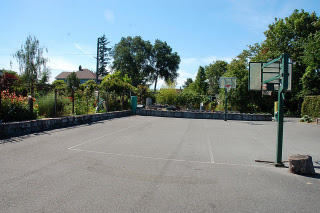The morning after Antoine Predock’s presentation at the Goff Lecture series .
I don’t have my notes in front of me, which is why I am writing. I really want to express where Mr. Predock’s lecture has inspired me. If you want more about him, then you can read his book.
A. Predock is a charismatic and inspirational person. It is easy to find little pieces of myself in him. His passion and dedication to architecture is evident in his work. I found that his comments on sustainability could easily be misconstrued to give a young person license to dismiss environmentally sound practice. However, I believe he places the environment high, just not at the expense of poetic license and the expression of art. He sees Architects as artist. Everything else we do, business, sustainability, client meetings are supporting roles. I agree. It is easy to forget that, but it is a very important point he made.
This leads me to reflect on several other essay’s I’ve been reading, Frampton’s “Critical Regionalism” and Essays out of the first half of “Recovering Landscape” By James Corner. Mr. Predock helped me formulate some of my thoughts I’ve been having.
Predock really talked about intense and thorough research. It is this huge upfront and in-depth plunge that will give you the power of intuition. He referred to a story about Bruce Goff. He stopped in unannounced as a young man to Bruce Goff’s studio/office, and he asked Mr. Goff the Meaning of one of his famous houses, maybe the Bavinger House. Mr. Goff took a deck of cards and fanned them out and referred to “the gesture”. I took it to mean human gesture and intuition. I am analyzing, dissecting and regurgitating what I heard. But I really took the premise of the lecture to be this plunge and immersion into research. Studying culture, land, geology, strata and extending that land based research right into the spiritual or the sky. “Going from the earth to the sky” he said.
It is this immersion into research, collage, digital representation, drawing and exploration that gives the designer the ability to use gesture and intuition and to have confidence in it. This I believe. Design is then based at a subliminal and an overt level towards the place through intuition. However, we have to develop the support system that informs intuition.
I have been having trouble reconciling place. A part of me wants to hold onto the historical and cultural significance of place. This is where some of my reading this week has helped. Mr. Predock identified with culture and historical significance. However, he really talked about the peculiarities of light, earth, sky, water of a specific place. Specifically he let local materials, light intensity, vegetation, water patterns inform him. He talked about their interaction with our senses. He also talked about how that culture was related to these peculiarities of place. Many times not overtly, but subliminally. He provided numerous examples of how his research guided him to intuitively design. His designs would be informed by his research and his clients would identify with the design in unusual and unexpected ways.
Mr. Predock said that he would sacrifice sustainability for poetic expression, not a direct quote, and I do agree with him. I think that I fall into the trap of the environmental issues dictating the design. They should inform and guide. The understanding of the environment should give me a designer to trust my intuition. However, a design without art and poetic presence is a design without spirit. I will not add to our cultural schema. One of the articles I was reading was about the preservation of farms in Holland. If the farms are preserved, but they are not farmed the same way, the people are no longer using them as life sustaining and they are no longer interacting with the site, then they have become a museum piece.
We must allow change. We must encourage each generation to write on the palimpsest. If not. Preservation becomes a hole in our cultural record. By adding the layer of each generation we enrich culture. I think that I may be skewed in thinking this, because I live in the U.S. and I live in Oklahoma. I live in a place where our history is very short. Where we typically see the land as tabula rasa. Where the Indian foot print, and the early settler’s footprint is very slight. I do want to preserve, but I don’t want to live in a museum. I see the museum option as lifeless.
Mr. Predock talked about his landscape of the art museum in Taiwan. I don’t remember the name, but his landscapes referred to specific regions. They were not a showcase with plaques of names. They were a way to incorporate the identity of other people’s environment into the space. It was about the relationship that the museum was having with the people and the people in return would have with the museum.
As usual these thoughts are off the cuff, they provide a record of thoughts and a jumping off place to accrue more understanding.
















































































